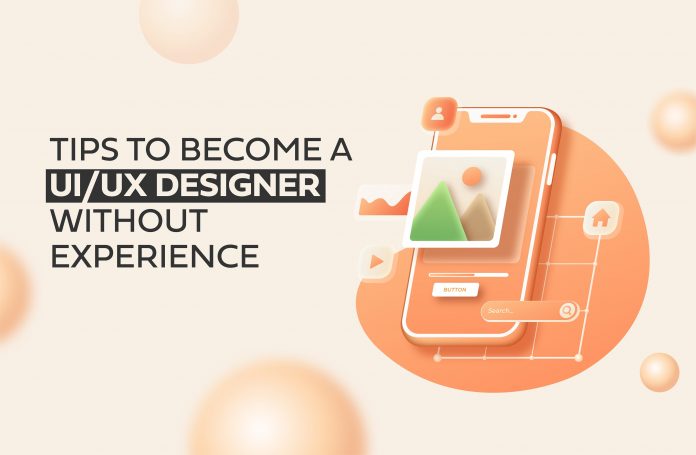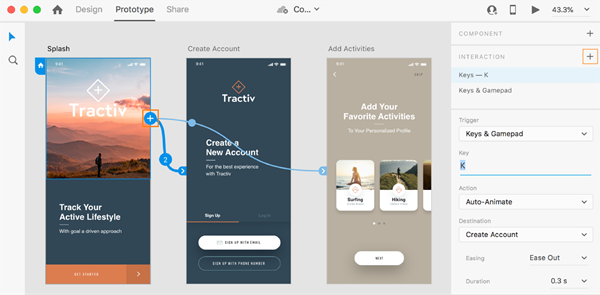It’s been an age-old argument that you need work experience to acquire a UX design job. But don’t you agree with me, it’s difficult to build experience when you don’t have a design job, to begin with? Continue reading to know how this doesn’t have to be a problem for you.
A number of UX design agencies in Mumbai, Delhi are on a constant hunt for booming talent as brands have changed their focus to digital requirements with changing times. Without graduating with a design degree or having no formal design education, you might think getting placed for UX/UI roles would be a daunting process. But that’s not the case anymore! For every requirement in a job, there is a workaround if you understand the need behind the requirement.
For example, a design degree requirement assures recruiters that candidates would possess strong design skills, have a working knowledge of graphic design tools, and also have an understanding of design thinking. Here’s the catch: all of what is mentioned above can be self-taught!
Additionally, work experience requirement helps recruiters identify designers who are most likely to deliver projects end-to-end, and have incorporated research in their designs, and can work in a team- all of which can be practiced and demonstrated through personal assignments.
Ultimately what matters is if you can prove your skills, knowledge, and passion for the craft even if the approach is unconventional. So, how can you improve on this? Let’s get started!
How to become a UX Designer without experience:
UI/UX design offers a rewarding, creative, and high-paying career but the journey can be challenging. It does require a significant amount of commitment to learning the right design skills needed to do the job.
Step 1: Understand the reason why you want to do it
Like any other career path, it’s important to know why you want to pursue a career in UI/UX design. Pondering about this can help you decide whether you want to develop expertise in a certain domain, where your interests lie, or what kind of organizations would be suitable for you.
Step 2: Pick up the right skills
There is no other way to get around this – This is a hands-on profession that demands UX design skills such as designing wireframes, mockups, prototypes, and sketches, conducting testing, and user research. Other than that, proficiency with tools such as Photoshop, Illustrator, and Adobe XD is the bare minimum requirement.
Step 3: Take up a course or an internship
Many of the skills mentioned above can be self-taught, but online courses and boot camps provide an in-depth and comprehensive approach to ensure that you cover all your bases with industry mentors and professionals on board. Additionally, they also offer certification in areas you’re struggling to cope up with. There are many UX Design agencies in Delhi and Mumbai that can offer internships where you can get practical experience of how the design field works.
Step 4: Be proactive
Recruiters are always on the lookout for designers who fulfill all the requirements but what makes you stand out? It’s your willingness to go above and beyond the technical skills required. In such a creative field, they want to see curiosity, innovations, and an ability to think not just out of the box but also beyond it.
Step 5: Work on a portfolio
As with any design role, a strong portfolio can speak volumes for you as it displays the work that you’re capable of doing. Push your work on platforms such as Behance, find opportunities to talk about how you’ve combined your technical and soft skills. The goal is to make both yourself and your work easily accessible and searchable out there.
Step 6: Networking is essential
Networking can help you gain more visibility among professionals and designers who have been there in the field for a while now. Plus, it is a great way to learn about several job opportunities and also get a sense of the market. The design community is still small and staying connected can help you gauge more possibilities.
No matter if you’ve had a background in UX design or not, follow these steps and keep learning to broaden your knowledge in UX design. Moreover, you should keep in mind that it might be a long road if you know nothing about design. Be brave and ready to take in one day at a time. Another tip: do not set unrealistic high goals in the beginning. Choose a position that can offer you the right opportunities to learn and grow.
Author: Saniya has been in the field of writing for the past 2 years. While writing is a passion, her interests also lie in extensive reading and following up with what brands are doing digitally.


















